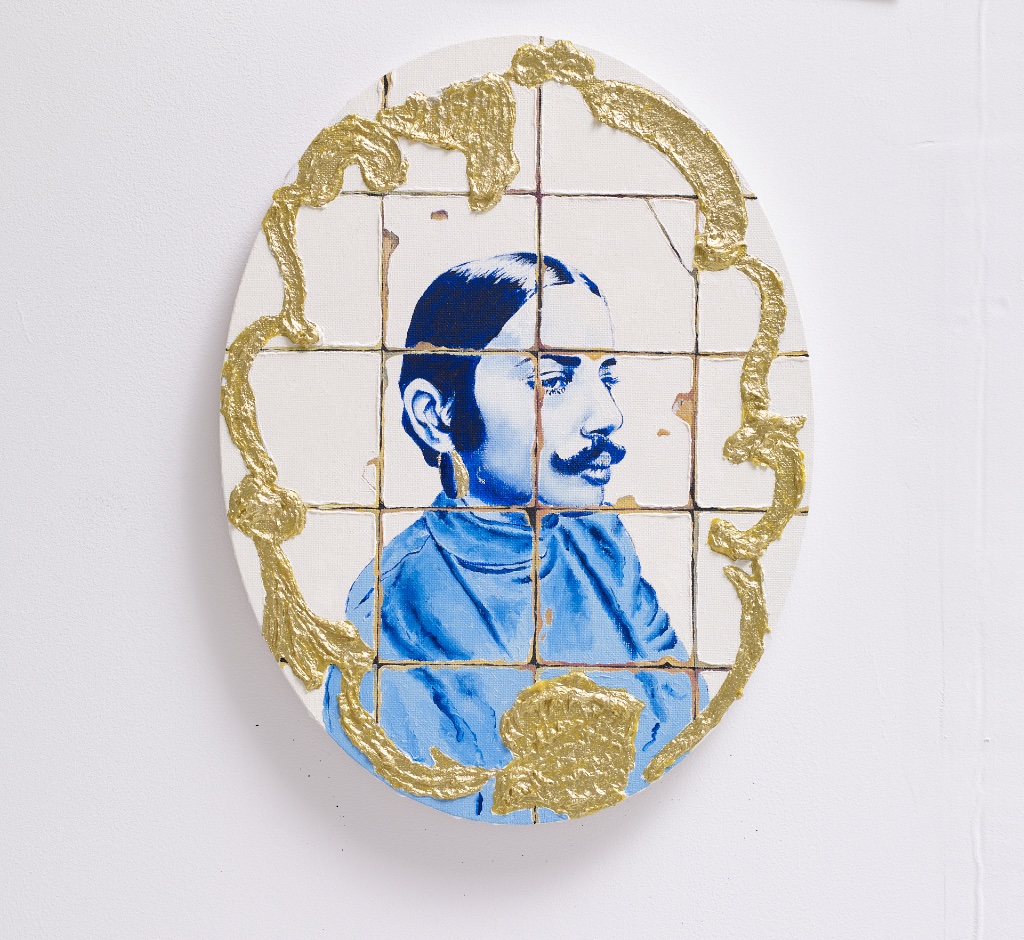
The exhibition “Juntas” is part of an evolving three-exhibition project undertaken by the artist Alicia Paz, with each show adapted to its location, first in two locations in Britain and now at the Maison de l’Amérique Latine in Paris.
For the Paris show, the London-based Paz, who was born in Mexico but has lived in the United States, Germany, France and Britain, has created a wide-ranging panorama of women’s portraits that includes both well-known historical figures and women from her own life who have inspired and supported her, giving equal weight to all.
“My decision to paint a particular woman’s portrait flows very much from the path my own life has taken,” says Paz, “and my ‘arborescent’ sense of identity.” Two tree-shaped pieces, one covered in quotations from and the other in portraits of women, are part of the exhibition.

Two walls of portraits, painted on a backdrop of trompe-l’œil azulejo tiles and lavishly decorated with gold, fill one room. “By painting images that reference a ceramic tradition,” the artist says, “I am also celebrating that beautiful craft, legitimizing and elevating it, just as I aim to do with the remarkable and often unsung history of women’s lives.”

Among the women featured are historical writers (Jane Austen, Virginia Woolf, Louisa May Alcott), women’s rights activists (Olympe de Gouges, Mary Wollstonecraft, Gloria Steinem), political figures (Madame de Staël, Rosa Luxemburg), artists (Artemisia Gentileschi, Sonia Delaunay) and even a pirate (Anne Bonny).

If you are wondering about the mustachioed portrait, it is based on a self-portrait by Cuban-American artist Ana Mendieta, whose life came to a tragic end in 1985, when she fell or was pushed out of a window after a fight with her husband, the artist Carl Andre.
Contemporary figures included on the portrait walls are the Paris-based artists Carmela Uranga, who, like Paz, has a multicultural background, and Heidi Wood; Swiss artist Sabine Hagmann; Mexican-American educator Lillian Baca McGuire; and Guadalupe Paz, a Mexican international affairs specialist.

Obviously, this is an art project with a strong political bent, shining a light on and honoring the women depicted (the biography of each one can be found here). This enlightening journey through feminist history, both personal and universal, travels around the world bringing together – the meaning of the title “Juntas” – these disparate women in time and space, and making sure that they are seen.
“Community is a force that joins our strength to do the work that needs to be done,” says Paz. “Arms to support us when we fail. A healing circle. A circle of friends. A place where we can be free.”
Aside from the portrait walls, the exhibition includes a few larger paintings, such as “Courage Calls to Courage Everywhere” (pictured at the top of the page) and installations distributed around the first floor rooms of the elegant mansion that houses the Maison de l’Amérique Latine.
Some of Paz’s other favorite themes include water, pirates and water creatures like octopuses, all of which she associates with her focus here on women. “Many of the women I paint have undergone some kind of displacement or dislocation, at times literal/geographical, at times emotional/existential,” she says. “My use of blue, my representing boats and waves in some of the works, and even my depiction of historical female pirates in conjunction with poets such as Emily Dickinson, who wrote so many poems about the sea, is a way for me to pay tribute to brave, creative explorations of the self, which is as deep and vast as an ocean.”
Favorite